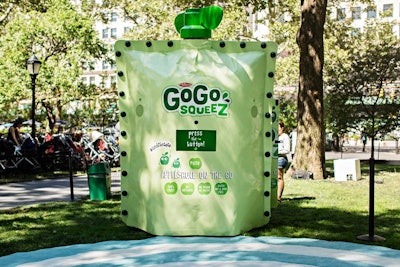
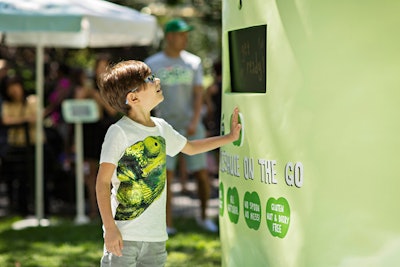
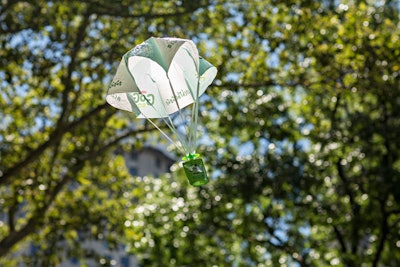
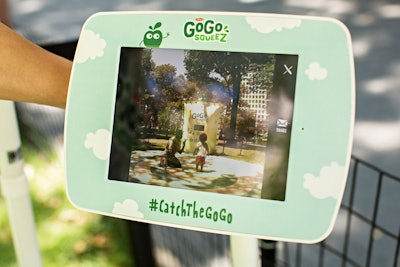
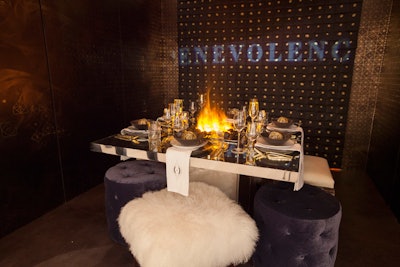
Wolf Gordon by the Getty's Group curtained off its booth, and guests stood in line to enter the mysterious installation. With a "Secret Society of Benevolence" theme, the space had a back wall made of black envelopes sealed with golden hearts. Guests could take the envelopes off the wall, and instructions inside bid them to perform kind tasks, such as offering compliments to fellow partygoers. A large-scale graphic design was slowly revealed as guests took more envelopes.
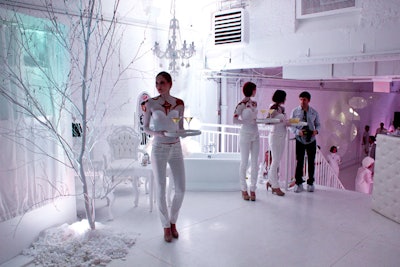
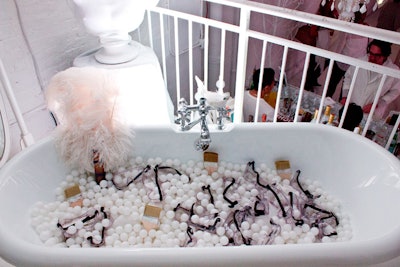
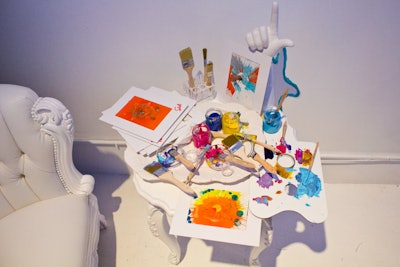

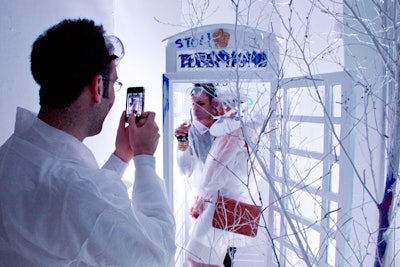
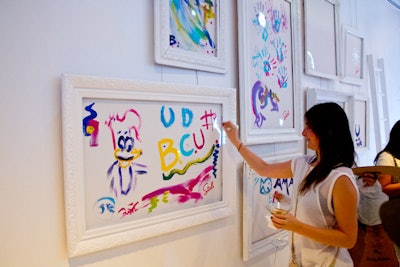
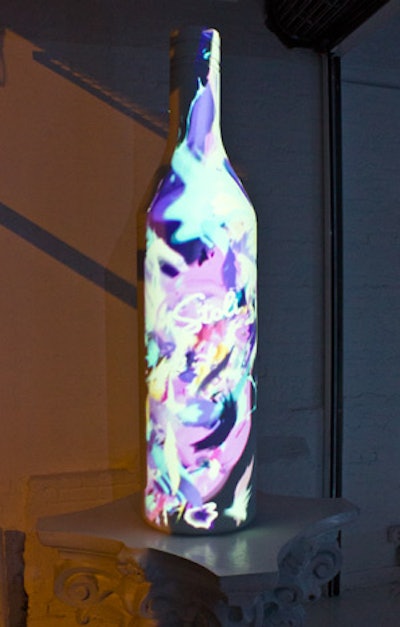
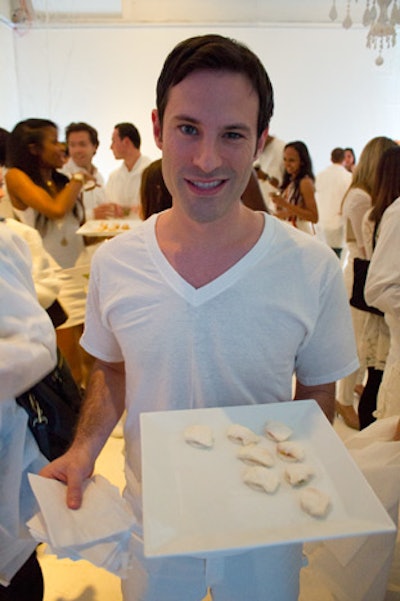
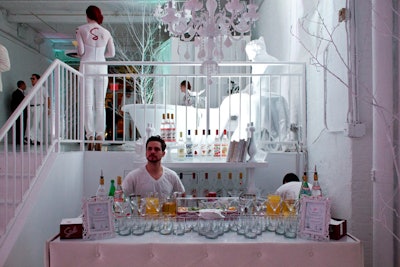
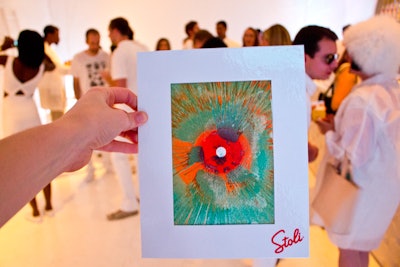
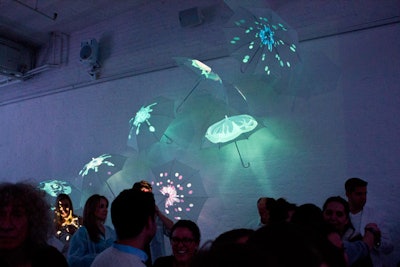
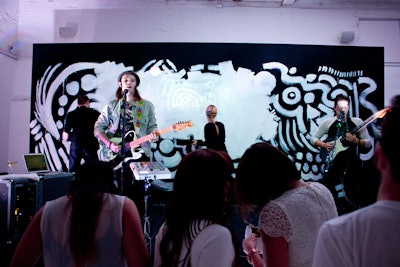
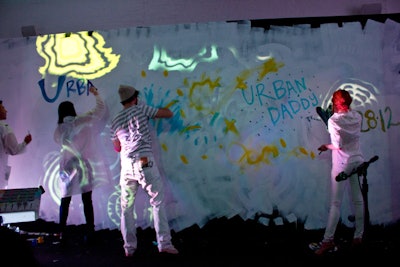
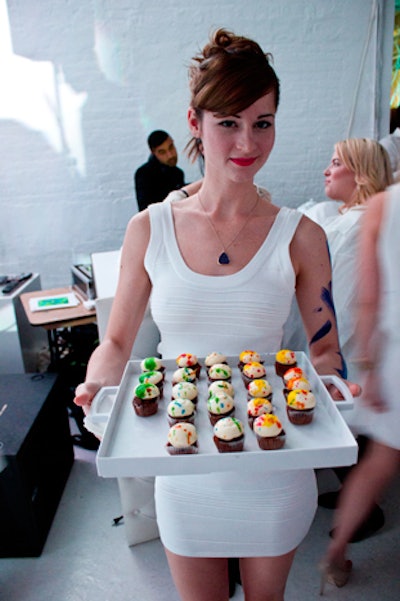
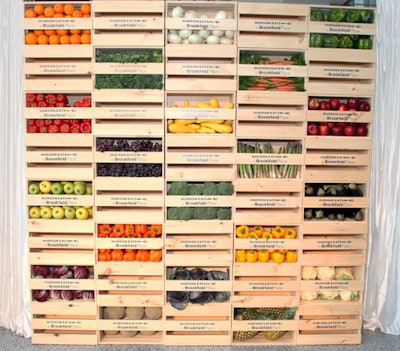
Shiraz Events created a step-and-repeat using stacked crates of fresh vegetables at the May opening of Hudson Eats at Brookfield Place in New York.
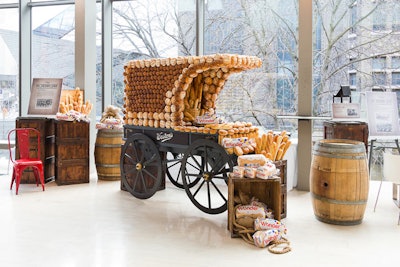
At Weston Family Foods' annual group meeting, held at the Royal Conservatory of Music in Toronto in May, 5th Element Events built a wagon out of bread. The production company shellacked and hot-glued real bread to create the decor piece.
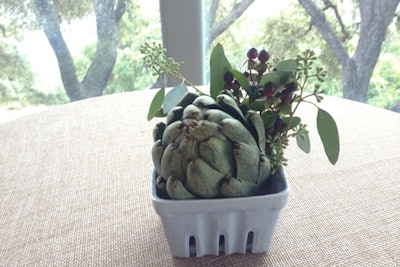
The renovated Riverside ballroom at Radisson Hotel & Suites Austin Downtown in Austin, Texas, was unveiled during the city's Taste of Downtown event in September. In the spirit of the foodie fest, the venue's centerpieces featured produce, such as artichokes and potatoes, in fruit and vegetable cartons.
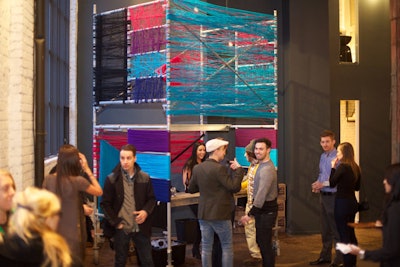
Event planner Kim Graham of Kim Graham & Associates used the concept of “yarn bombing” (including on the 28-foot bar's framework) to bring a sense of pliability to the industrial Pendell Boiler Factory space for March's Re-Make Event in Toronto.
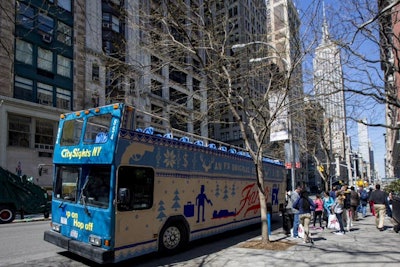
To promote its original series Fargo, the FX network hired crochet artist Olek to outfit a double-decker bus with a wintry knit inspired by the show. Fans could score branded scarves and instant hot chocolate packets from the mobile artwork, which traveled around Manhattan in April.
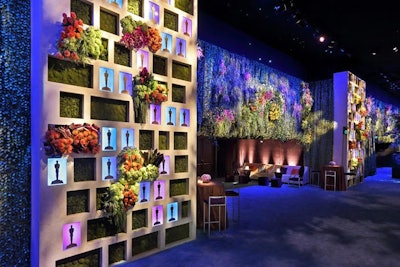
This year's Governors Ball, held after the Oscars ceremony in Los Angeles at Hollywood & Highland in March, featured massive vertical garden walls from Mark's Garden and a starry ceiling designed by Larry Oberman in association with ELS. Two 18-foot-tall structures filled with floral arrangements and moss insets flanked the entrance to the park-like setting.
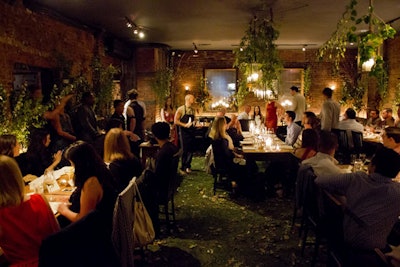
For its annual client and advertiser dinner, Swoop, a Cambridge, Massachusetts-based media company, enlisted the help of chef Marc Forgione, who decorated his TriBeCa restaurant with vines, leaves, moss, and real grass carpeting. Animal sounds served as background music for the event.
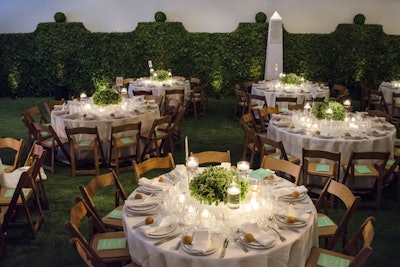
The Museum of Modern Art’s event team transported guests to the English countryside with boxwood hedging, large topiaries, and faux grass on the floor of the lobby for its annual Party in the Garden in May.
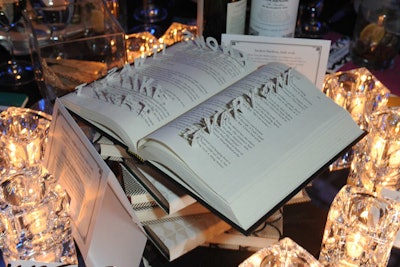
The Walrus Foundation gala, held at the Fermenting Cellar in Toronto in January, featured “literary life sculptures,” which were commissioned from Toronto artist Kalpna Patel. Each table held a stack of books with handmade paper covers and “exploding" books with pop-up letters carved from the pages that spelled out titles of iconic Canadian novels or sponsors' names.
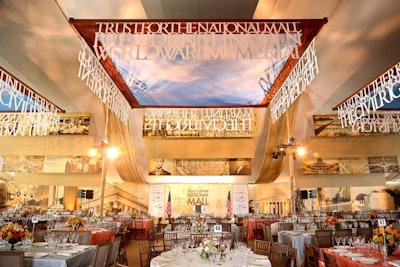
Monument names on the National Mall as well as significant events were rendered in oversize letters and suspended from the ceiling at the Trust for the National Mall's annual benefit luncheon in May.
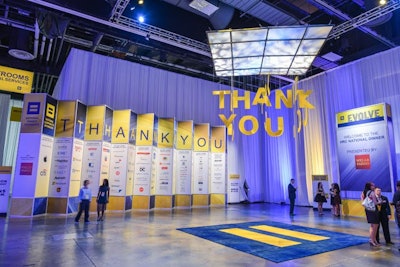
A chandelier that looked like abstract art spelled out “thank you” when viewed from a certain angle at the Human Rights Campaign's National Dinner, held at the Walter E. Washington Convention Center in October.
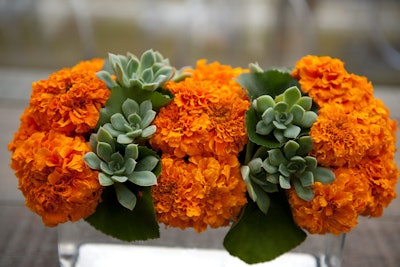
At the Veuve Clicquot Polo Classic, held at Will Rogers State Park in October, Mille Fiori Floral Design mixed succulents with marigolds in the brand's signature color for some of the arrangements.
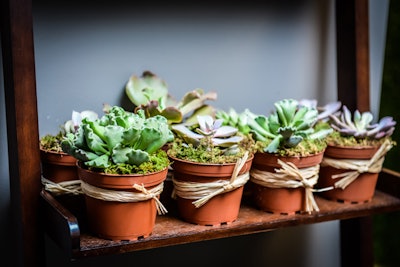
Guests received a potted succulent from florist Multiflor as a take-home gift at Washingtion-based 360 Live Media's office party in September.
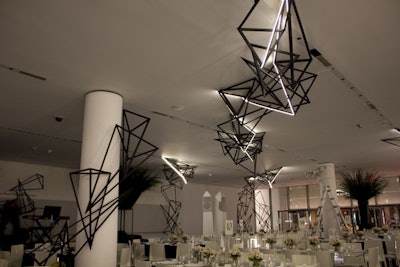
The Museum of Modern Art honored Alfonso Cuarón during its annual film benefit in November. Taking inspiration from the writer and director's award-winning movie Gravity, the dining space included clear tables, sleek white chairs, deep blue carpeting, and geometric centerpieces. Large metal angular sculptures hung from the ceiling, while LED light strips, similar to an aircraft's path lighting, added illuminating accents.

For the premiere of Cosmos in March, Fox's creative services team transformed a parking lot in Los Angeles's Griffith Park into a screening room with spacey, LED star draping from Kinetic Lighting.
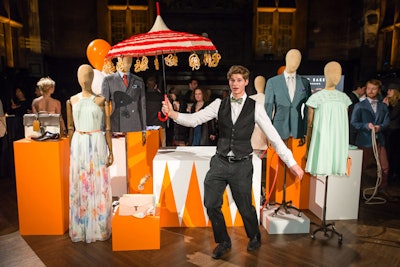
Creative Edge Parties provided carnival-inspired fare, like corn dogs, popcorn, cotton candy, and funnel cakes dangling from parasols, at Ted Baker's launch event, held at the High Line Hotel's Hoffman Hall in New York in February. Servers were instructed to imitate tightrope walkers, while circus-style acts performed throughout the space.
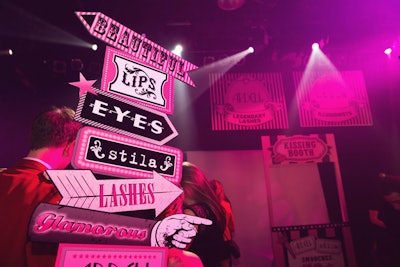
Rethink Breast Cancer's Boobyball fund-raiser, held at Toronto's Kool Haus in October, featured carnival mirrors, a fake elephant, and a hot-air balloon, along with classic big-top performers such as a clown and juggler. Vintage circus signage, like the Stila Cosmetics and Ardell Lashes display, was used throughout the pink-hued space.
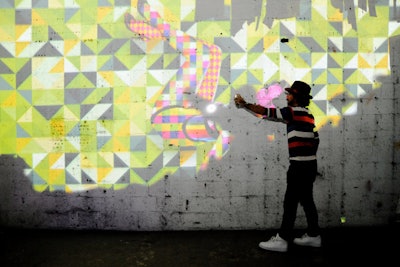
Beverage brand Perrier teamed up with street artists JonOne, Kobra, and Sasu to create limited-edition packaging designs. 3dar, an animation studio based in Imperial Beach, California, helped develop the interactive light graffiti wall featured at one of the launch parties, held at the Colossal Paint Warehouse in Brooklyn in September. Guests used an LED-equipped spray can to "paint" on the warehouse wall; the artwork was revealed as the guest moved across the canvas.
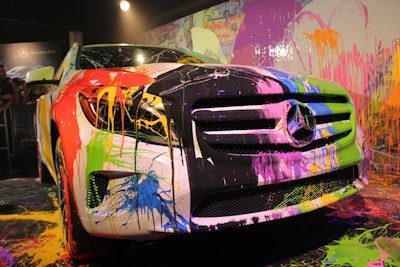
To introduce its new GLA SUV, Mercedes-Benz enlisted Los Angeles-based street artist Mr. Brainwash to perform a live art exhibition during the car brand's Evolution Tour, which kicked off in July at Terminal 5 in New York. He continued to add to his freestyle design on the exterior of a brand-new GLA as the tour progressed.
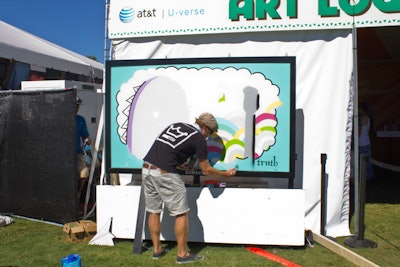
At AT&T's U-Verse Art Lounge during the Austin City Limits Music Festival in October, there was a daily mural painting demonstration by a different local artist. Attendees could also win custom-painted Samsung cell phone covers.
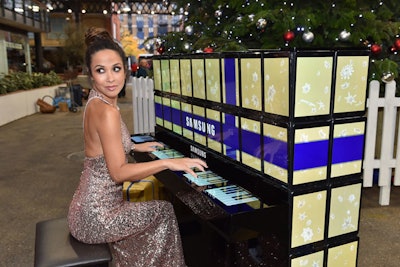
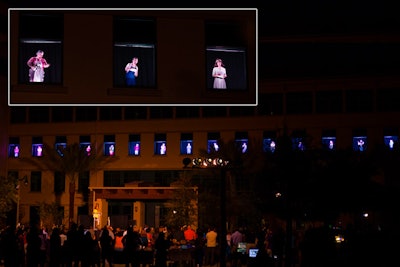
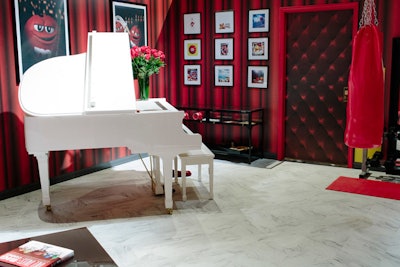
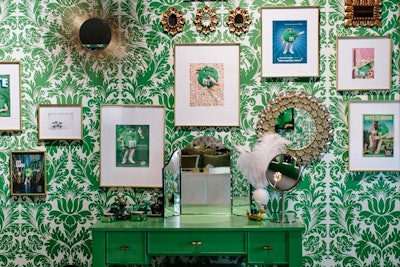
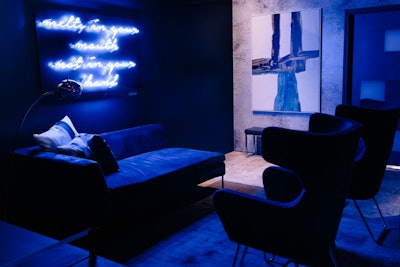
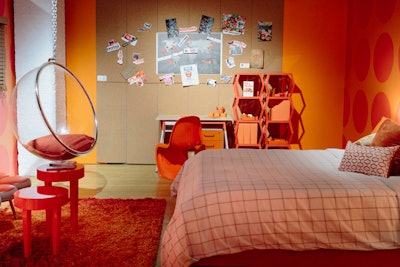
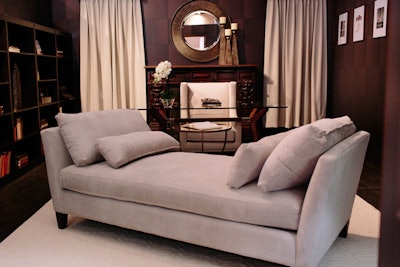
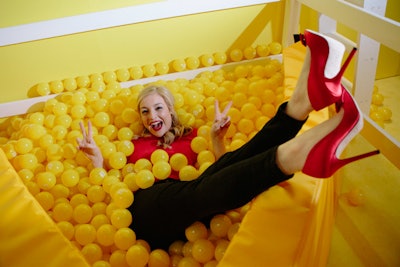
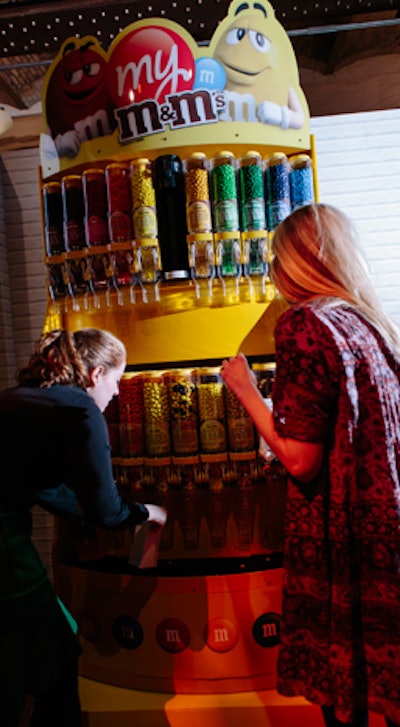
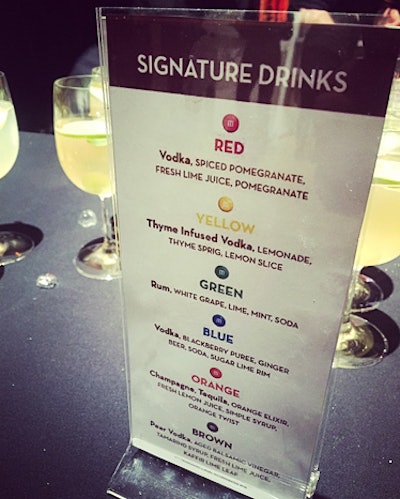
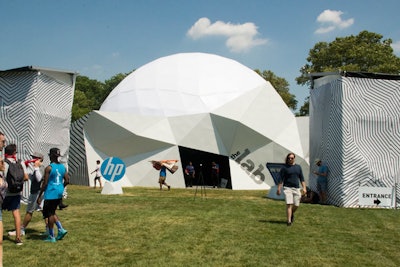
The Lab, which was presented by the Verge and Hewlett-Packard, was the focal point of the festival. Designed and curated by Meta.is, the structure housed seven interactive digital art exhibits.
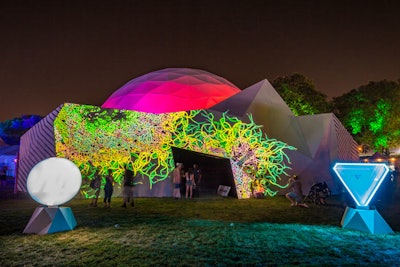
At night, the structure's facade, which was produced by VolvoxLabs, lit up with colorful, projection-mapped ultra-high-definition videos of designs that continuously changed.
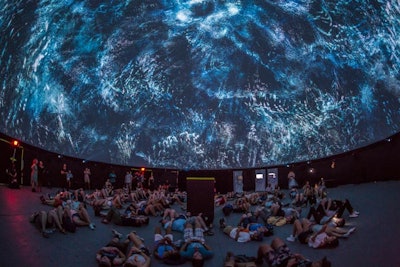
Inside the 70-foot dome was a 360-degree virtual reality theater that held as many as 400 people. The experience was visually produced by Invisible Light Network and Dirt Empire, and Antfood provided sound effects.
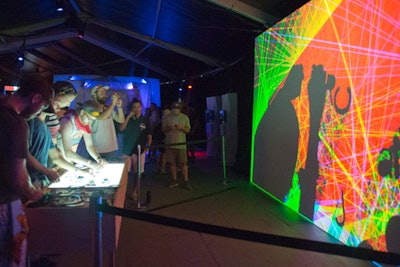
Brooklyn-based artist Zach Lieberman's Reflection Study exhibit allowed guests to create different formations projected onto a wall by moving shapes made out of plexiglass over a light box.
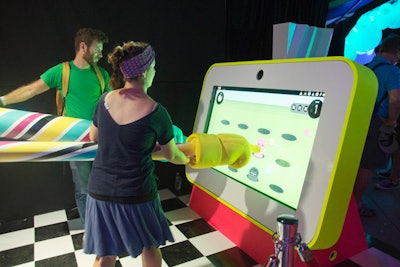
Giant Gestures, an exhibit from Brooklyn art duo Mountain Gods, offered festivalgoers a chance to play around with an oversize touch screen tablet by using giant foam hand props. The installation was meant to reinterpret how humans interact with technology.
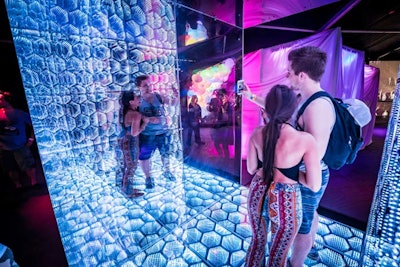
A popular exhibit inside the Lab was the Infinite Wall created by Brooklyn-based artist Gabriel Pulecio. The interactive tunnel—created with mirrors, sounds, and lights—used motion sensors that responded to the guests who stepped inside.

Attendees could physically interact with Hyper Thread, a silk tent that featured seven silk hammocks. Created by Dave Rife and Gabe Liberti, the exhibit enabled festivalgoers to make new sounds by moving around in the hammocks.
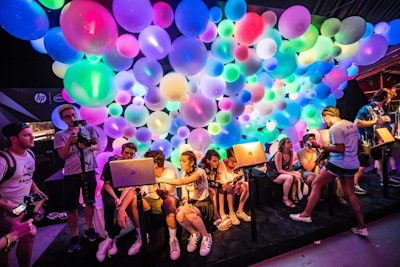
Sponsor HP showcased an attendee-powered color wall inside the Lab. Using the brand's technology, the wall would change colors in time for a selfie taken with a laptop. The activation was produced by Infinity Marketing Team.
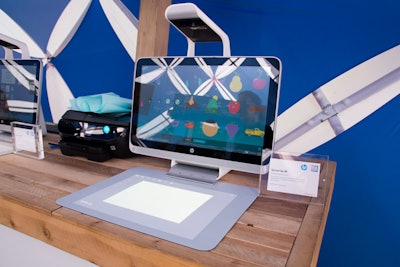
HP also showed off its technology in a separate lounge. The activation gave guests the chance to create custom temporary tattoos using Sprout by HP technology.
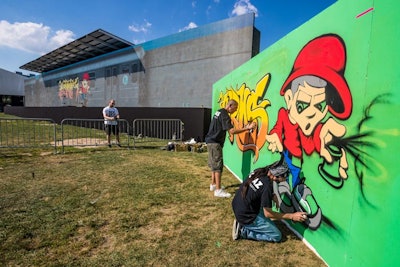
A collaboration between 5Pointz Aerosol Art Center, Mevent, and AST Studios, the subway-train projection paid homage to graffiti art's New York origins. Artists spray-painted graffiti on a green screen, which was translated onto the high-definition video wall.
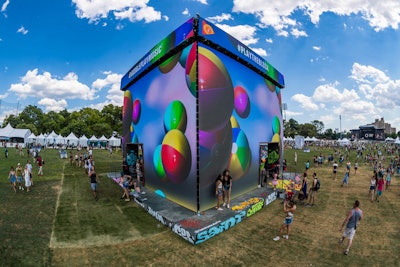
The visually striking, LED-powered multimedia block featured changing videos of animated designs, music videos, and performances, based on fan interaction and festival sets. The structure featured Google Play's social media handle and hashtag.
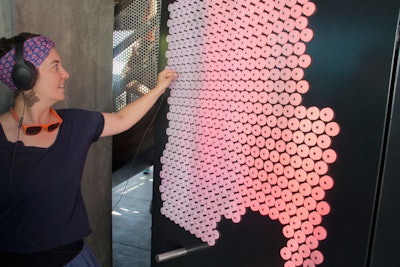
The interior of the block featured a headphone jack wall. Attendees could plug headphones into the various jacks to listen to different songs from Google Play Music playlists, including one curated for the festival. If listeners hit a "winning" jack, they were taken up to the second-story roof to enjoy the festival view.
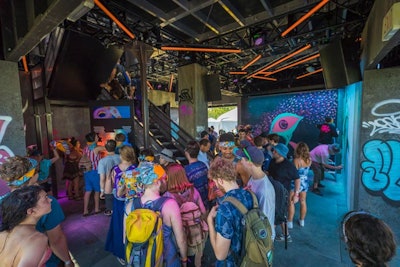
The block also featured live graffiti demonstrations.
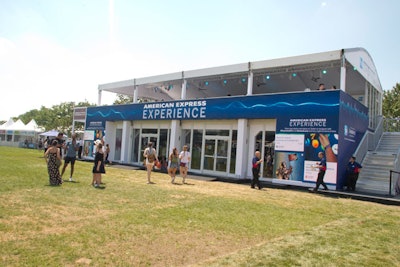
American Express' two-story tent, built and designed by Momentum Worldwide, offered a mix of low-tech and high-tech experiences, including a 360-degree panoramic digital photo booth. The roof deck was open to card members and offered a view of the main stage, DJ sets, and custom cocktails.
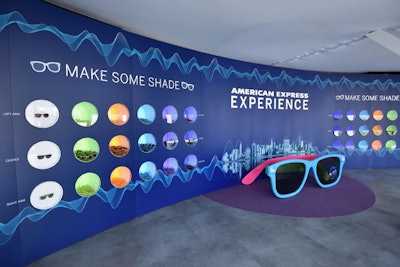
A popular low-tech experience for festivalgoers was a customizable sunglasses station, located on the first and second floors.
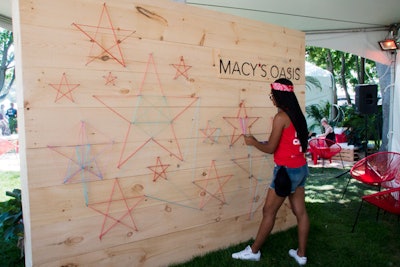
Macy's partnered with LeadDog Marketing Group to produce the Macy's Oasis, which gave festivalgoers a chance to relax with lounge furniture and a charging station. Along with bandanas soaked in ice water, the lounge had a string art wall created by attendees.
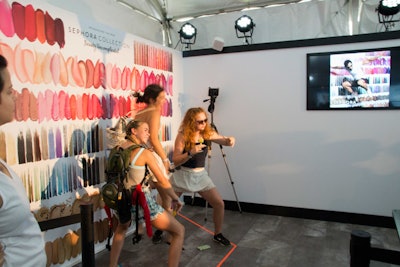
The official beauty sponsor of the festival, Sephora partnered with Revolution Marketing to host a tent that gave festivalgoers a chance to test out a variety of products, including face masks and lip balms. Along with a beauty bar, braid bar, and dry shampoo styling station, the tent had a photo booth with makeup props and a makeup palette backdrop.

Antioxidant infusion beverage brand Bai partnered with Relevant to produce the the lounge, which offered drinks and cocktails, a phone-charging station, and a photo station featuring a LightBright wall created with Bai bottles. Bai also had a custom Snapchat geofilter for the festival.

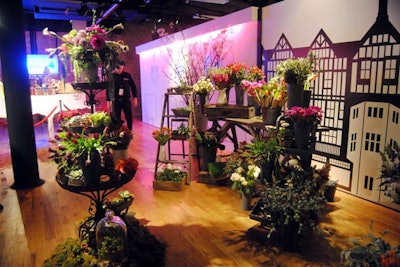
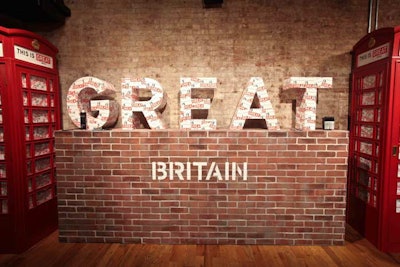
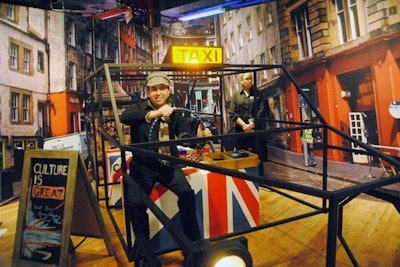
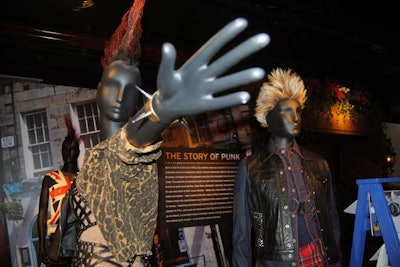
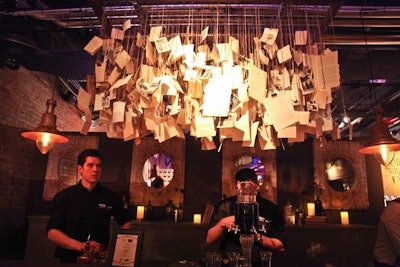
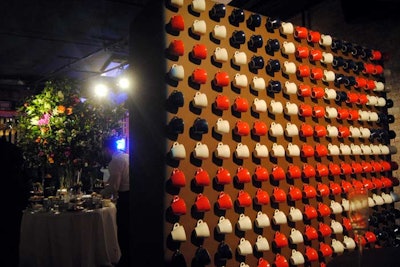
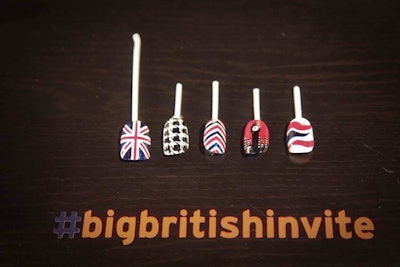
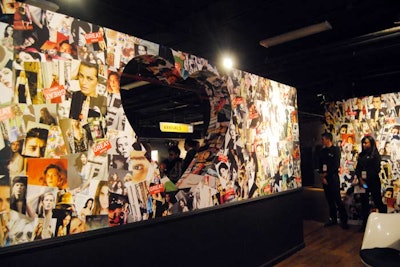
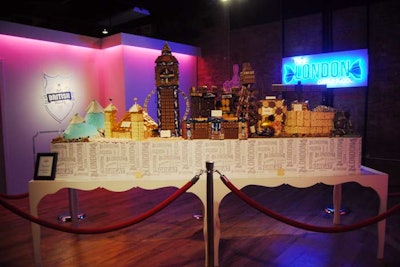
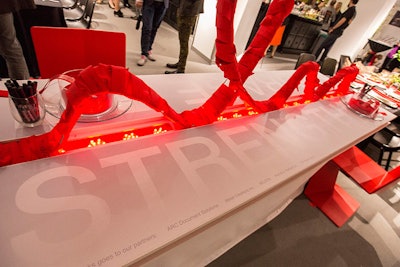
The Ruder Group's table, designed by Nelson, reminded guests of the event's cause. On either side of the table letters spelled out "Strength" and "Courage." A design in the shape of the red ribbon that symbolizes AIDS awareness ran down the center of the table.
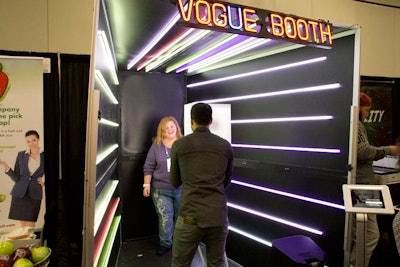
Inspired by the fashion magazine’s futuristic light tunnel-style photo booth at the Met Gala, which was held in May in New York, Coco Events allows guests to strike a pose and rock out to music during their photo session. The booth is approximately 8 feet deep and 6 feet wide, and rents for as many as five hours for $2,500. Guests receive a print and video via email.
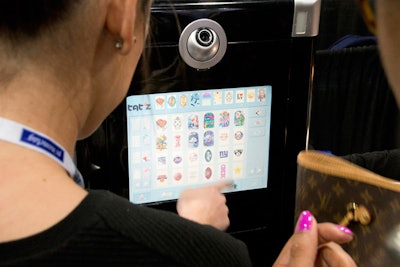
Using a special polish and printing process, Nail Printing Events creates custom nail art, including emojis, logos, and even selfies. The designs are printed directly onto guests’ nails and can be removed with nail polish remover.
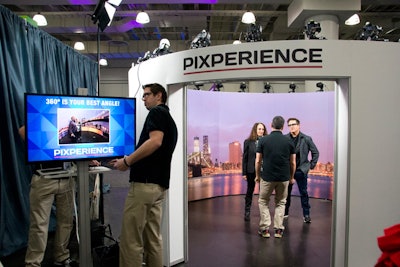
This multi-camera photo experience from Pixperience surrounds guests, taking photos from 360-degree angles simultaneously and stitching them together to make the moment appear to rotate in space. Guests can share the image on Facebook, Twitter, and Instagram. The setup can also be fully customized to match an event’s branding and theme.
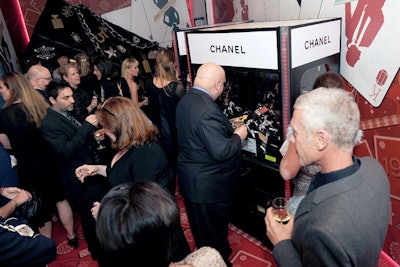
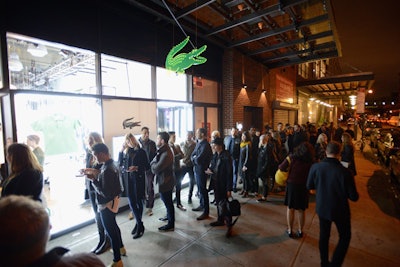
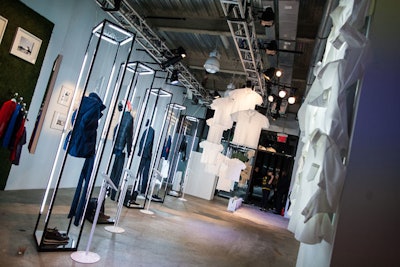
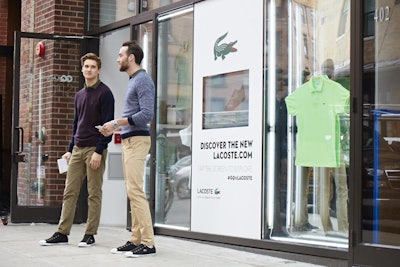
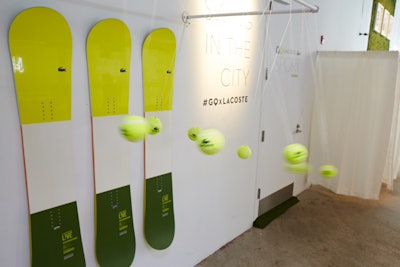
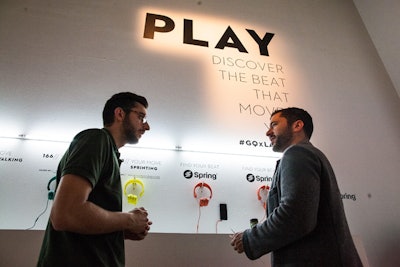
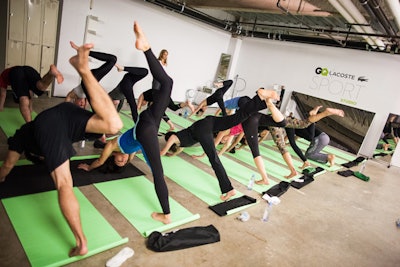
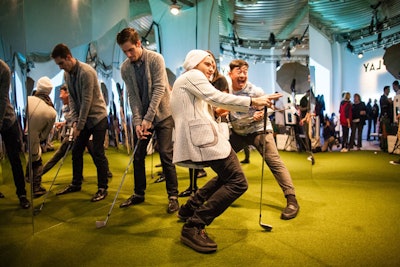
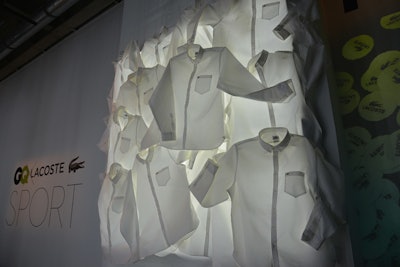
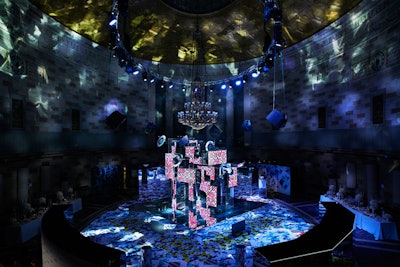
For the launch of its fashion collaboration with the British-designed Peter Pilotto label, Target tapped Bureau Betak to produce back-to-back parties with co-host Net-a-porter.com in London and New York. The latter fête and private shopping night took place on February 6 at Gotham Hall, where 700 guests were immersed into a world of print and color that represented the Pilotto aesthetic. The focal point was a kinetic installation that combined synchronized music, light, video projection, and LED screens. A bevy of models wearing the collection walked the centrally placed mirrored runway at timed intervals during the event while attendees were encouraged to use social media through Instaprint stations using the #PeterPilottoforTarget hashtag. Two stylish English buffets anchored the space.
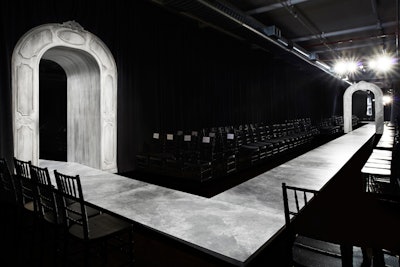
For Jason Wu’s fall show, held February 7 at 82 Mercer in SoHo, Bureau Betak shrouded the usually light-filled massive loft space with black drapes and chairs that strikingly juxtaposed the stark, marble-like runway and entrance arches. “Intimate, classic, but with a touch or surrealism,” said Alex de Betak of the set, which complemented a more reserved show that emphasized all things covered-up.
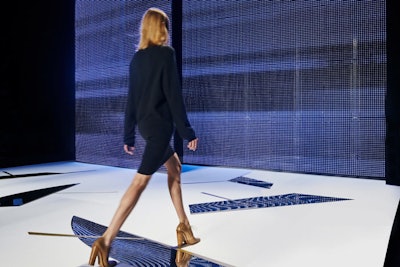
Similar to Jason Wu’s venue, the Lacoste show also contrasted a black show space with, in this case, a gleaming white runway and front row seating. Held at the largest tent space at Mercedes-Benz Fashion Week at Lincoln Center and produced by Bureau Betak, the February 8 show featured a backdrop of two large video walls that played a digital journey to Chantaco, France, home to the world famous golf club in Saint-Jean-de-Luz. The imagery was in the large mirrored shards that were “strewn” on the runway. “The modern images were in contrast to the more classical collection,” de Betak said.
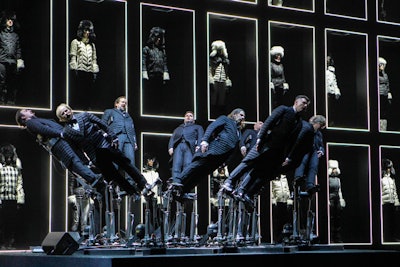
If there’s a large-scale venue in Manhattan, chances are Moncler has used it. For its February 8 Moncler Grenoble presentation, the high-fashion Italian skiwear brand took over the Hammerstein Ballroom to stage a Villa Eugenie-produced extravaganza. The event boasted 10 opera singers from the Pendulum Choir on oscillating pendulums that swayed as they sang in front of a stack of 60 illuminated boxes, each containing a model wearing an outfit from the fall collection. The nearly half-hour performance had a mandate to start on time in order to allow editors to make the dash across the East River to catch the Alexander Wang show.
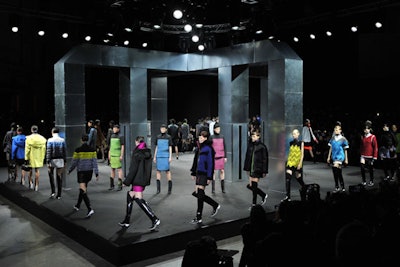
In a radical move that tested both the limits of how far editors would travel and their patience for utter venue gridlock, Alexander Wang staged his February 8 show at the Duggal Greenhouse in the Brooklyn Navy Yard. The venue, which advertises the latest in “solar energy, organic air purification, and eco-friendly building practices,” provided an apt setting for the Prodject-produced show that riffed on extreme conditions and survival. In a clever, high-tech finale, the lights went down and a dozen models walked out, taking their places around the edge of the runway. As the inner circular runway started and stopped, the heat-activated leather clothes on the models stationed in front of the set's metal vents changed colors—from black to blue or from yellow or purple—then slowly faded as they rotated away. Stefan Beckman designed the set.
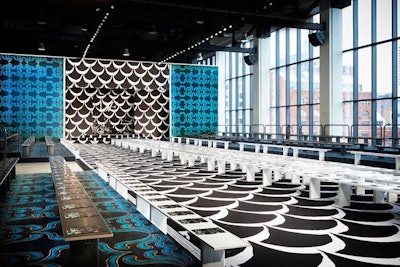
Diane von Furstenberg took a one-season respite from Lincoln Center, decamping to Spring Studios for her February 9 show, which celebrated the 40th anniversary of her iconic wrap dress. Produced by Bureau Betak, the venue was best summed up in one word: bold. Bold prints and graphics complemented the venue’s soaring windows showing the Manhattan skyline. A performance by singer St. Vincent accompanied the show, which suffered from only one downside: the move in venue meant a reduction of several hundred seats.
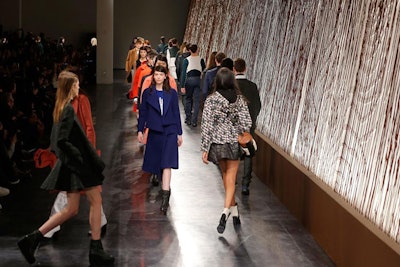
Held on the eve of yet another snowstorm, the February 9 Opening Ceremony show saw Spring Studios transformed by Villa Eugenie into a scene reminiscent from Willy Wonka and the Chocolate Factory. Invitations came in the form of golden tickets and, as guests arrived for one of two shows, they were handed boxes of chocolate made by chocolatier Callebaut. The highlight of the chocolate-filled evening and a nod to Belgium—the European nation that is the retailer’s country of focus for 2014—was a runway backdrop made from 2,000 pounds of melted chocolate poured down a blank white wall. To cap things off, mugs of hot chocolate were passed out to guests as they exited back out into the frosty weather.
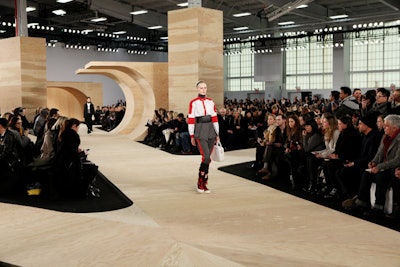
With a new design team at the helm working alongside Marc Jacobs, the Marc by Marc Jacobs symbolically moved from its usual 69th Regiment Armory venue to Pier 36 for its February 10 outing. Producers KCD took the 25,000 square feet of show space and turned it into a conceptual BMX track complete with loop tracks and a full plywood runway and seating for more than 650 guests. Regular Marc Jacobs show vendors returned, including scenic designers Kadan Productions, sound company ADI, and lighting provider IMCD.
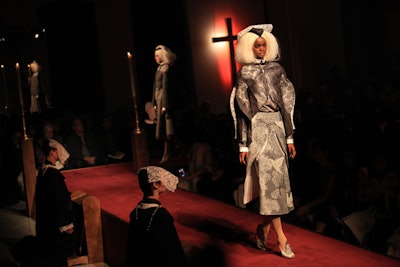
For his fall show on February 10, Thom Browne transformed Center548 in west Chelsea into a church filled with pews, burning incense, illuminated oversize crosses, and fashionable alter boys. Produced by Villa Eugenie, models dressed as chic nuns—with sharp eyebrows, dip-dyed black nails, and white veils—took the runway in a nearly monochromatic collection.
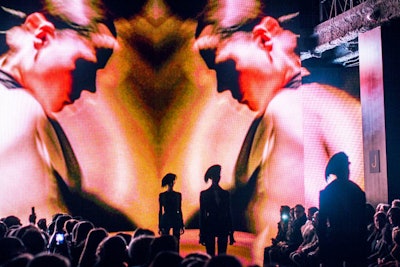
Celebrating all things New York, Donna Karan staged her 30th anniversary show in the financial district, taking over the former J.P. Morgan headquarters at 23 Wall Street. The highlight of the February 10 show, produced by One Kick for 580 seated guests, was a media installation. In the stark and dark venue, a film by Steven Sebring played throughout and was designed to capture the essence of "A Woman in Motion.”



















